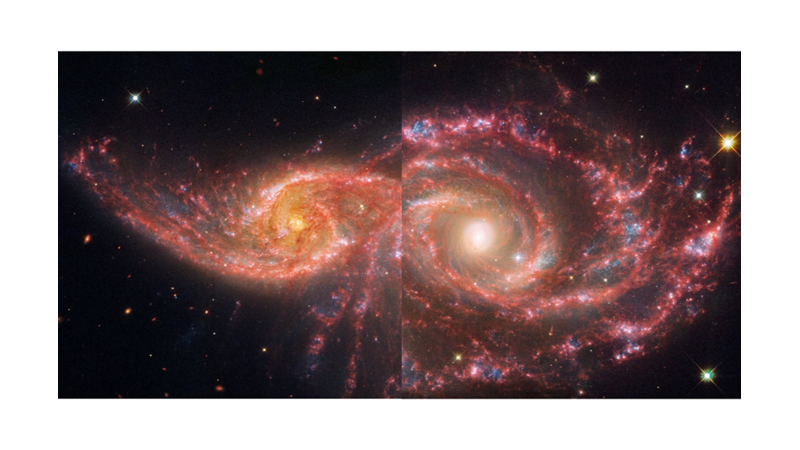NASA's Webb and Hubble telescopes have joined forces to track a pair of galaxies... are they looking back at us? These fascinating galaxies stand out for their eye-like nuclei behind a blood-red mask. The colors are created by a combination of mid-infrared light from Webb and visible and ultraviolet light from Hubble.
Until now, the galaxies have only passed by each other, but this image shows some signs of collisions. For example, the bright red lines that look like the “eyelids” of galaxies could be a sign of intergalactic material interaction. These lines could reveal the galaxies' wide, vein-like arms.
Their initial convergence may have distorted the galaxies' gracefully curved arms. The scattered, small spiral arms between the central core of the spiral galaxy on the left and the left-hand arm may be an example of this effect. Also noticeable are the various branches hanging between the galaxies' cores. And a thin, translucent appendage that juts out from the top of the larger galaxy almost protrudes out of the image.
Over millions of years, galaxies can pass by each other again and again, merging their core and arms, eventually resulting in an impressive “eye” with completely remodeled arms and a brighter core. When the gas and dust supplies run out, star formation will slow down and galaxies will calm down... and maybe then we'll be able to blink.
Image description:
Two spiral galaxies look like dazzling, unblinking eyes set in a bloodshot mask. The galaxy cores are bright yellow, while the spiral arms swirl around them in shades of pink, white and blue. The galaxy on the right is larger than the one on the left.
Credit: NASA, ESA, CSA, STScI


 Nielawore
Nielawore









Yorum yazmak için lütfen giriş yapınız